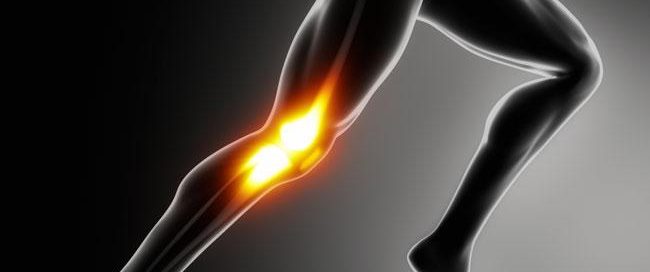Knees and Shoulders. Ask any trainer which joint in the body gives them and their clients the most trouble and they will most likely answer with one of those two. Some feel as if the human body has yet to evolve past the quirkiness of these joints. Or maybe they are just so troublesome because of our manic overtraining in sports or in the gym. Another theory is that the ligaments and connective tissue in these joints are deteriorated and weakened from the garbage food that we pump into our bodies from infancy. We are what we eat, right? An ACL made up of Doritos and Frosted Flakes surely can’t have all that much integrity.
Regardless of why shoulder and knee issues are so rampant today, we -as trainers- need to know how to diagnose, rehab, and strengthen these joints. Our clients depend on us for this. So in addition to sound nutritional advice we need a variety of proven exercises that will strengthen these trouble spots. This article from cosnetttrainingsystems.com illustrates some great exercises to improve strength and stability in the knee joint. Enjoy!
The 8 Best Exercises to Save your Knees – Part One: The VMO

Injuries to the knee now seem to be a very common part of playing any sport that involves contact or quick change of direction.
The highly feared complete ACL rupture takes the cake and seems to be popping up everywhere in elite Australian sport and also lower level team sports such as Australian Rules Football, Basketball and Netball.
Along with anterior cruciate ligament (ACL) ruptures we also are seeing increasing amounts of lateral and medial collateral ligament (LCL & MCL) ruptures and strains, increases in meniscus tears and poor patella tracking causing knee pain.
If you are reading this I can guarantee that you yourself have suffered from one of the above injuries or you know multiple people who have.
The rising incidence in these sometimes career-ending injuries just isn’t justifiable and needs to be addressed.
Strength coaches and athletes alike need to become educated on how to implement appropriate strength training programs to prevent these injuries from occurring.
It seems that many coaches are still using out dated training methods and are not addressing this issue appropriately leaving there athletes at risk of initial injury or re-rupture.
This two part article will outline the 8 best exercises we commonly employ at CTS to help strengthen the structures supporting the knee joint.
In Part One I will address Five of the best exercises to train the Vastus Medialis Oblique (VMO).
In Part Two I will focus on training the hamstrings to improve knee stability.
These exercises should of course be implemented as apart of a periodised strength-training program, which will be outlined in Part Two.
Part One
During the initial stages of the General Preparation Phase, close attention should be paid to strengthening the muscles surrounding the knee joint as the will help reduce the chance of injury.
The VMO is an important structure for preventing knee valgus (knee collapse) and also helps keep the patella tracking nicely. The 5 exercises demonstrated below will focus on the development of the Vastus Medialis.
The VMO is most highly recruited during the top and bottom 15% of knee flexion and also when the heel is elevated with greater load being placed onto the ball of the foot.
The following exercises will address training this muscle in its top range (Poliquin and Peterson step up), mid range (Front Step-up) and bottom range (Front Foot Elevated Split Squat and Cyclist Squat)
Poliquin Step Up
The Poliquin Step Up or Heel elevated Peterson Step Up is a regressed version of the Peterson Step Up. This would be one of the first exercises I would employ for an athlete to help activate the VMO and get it firing.
As the range of motion is small, the time under tension (TUT) for each rep is minimal so you can program reps between 20 and 30 for the initial structural balance phase of training.
Peterson Step Up
This exercise is fantastic for stabilising the knee joint as it trains the VMO, while also training the gastrocnemius which crosses over the knee joint and is another important aspect of knee stability.
Because the Peterson Step Up requires balance and coordination I would recommend keeping reps moderate in the initial sessions of around 8 to 15 per side to avoid form breakdown.
Front Foot Elevated Split Squat
The front foot elevated split squat when performed correctly is one of the most bang for buck exercises for training the VMO and other quadricep muscles, stretching the hip flexors, calfs, Achilles and just being all round fucking awesome.
Reps in the hypertrophy range of 10-12 would be recommended in the initial structural balance phase. Ensure repetitions are slow and controlled, using a 4010 tempo would be recommended for sufficient TUT in initial Accumulation phases.
Front Step Up
The Front step up when performed correctly trains the Vastus Medialis through the mid range. Ensure you don’t push off the ground using the non working leg by dorsi flexing the foot.
You shouldn’t need anything over a 12 inch box for this one, and aim to keep your torso as upright as possible.
Cyclist Squat
The cyclist squat, also known as the ‘quad squat’ for obvious reasons is a real doozy when performed correctly.
With this exercise, the heels are elevated quite high at about a 45 degree angle. This enables the trainee to lower into full knee flexion while keeping a perfectly upright torso, which really isolates the quadriceps, especially the VMO.
With this exercise the balls of the feet should be on the ground, the toes should be pointed out at a 15-30 degree angle and when performed the knees should come forward and outward over the toes.
The key with this exercise is to keep the torso perfectly upright, almost trying to lean backwards to get the full benefit.
It is very easy to cheat by leaning forwards or bringing the dumbbells forward during the concentric portion of the lift so make sure you check you ego at the door and lower the weight used.
Do these correctly and you will be pleased with the results.
At CTS we would employ the use of all or some of these exercises in a new athletes structural balance phase. The particular exercises used will depend on the athlete, their goals, training history, ability etc.
Any athlete or everyday trainee would benefit greatly from a structural balance phase focusing on these exercises initially before progressing onto the barbell squat variations.
Stay tuned for Part 2 where I will cover the 3 best exercises for training the Hamstrings to improve knee stability and function. I will also provide an example first phase training program incorporating the exercises outlined.
Stay Strong.
TC.


